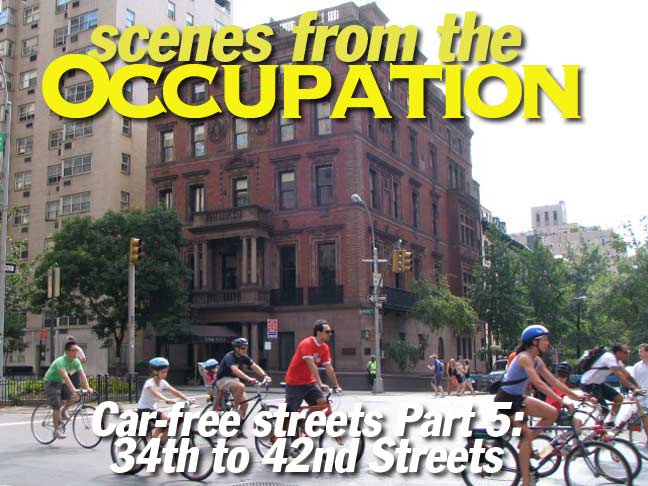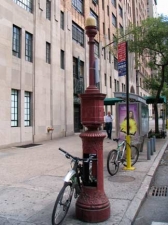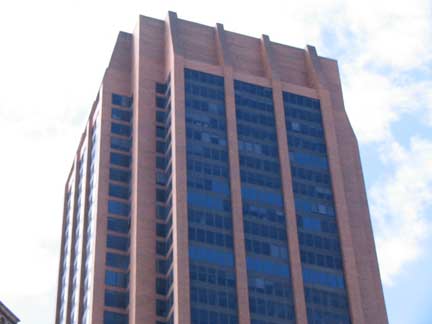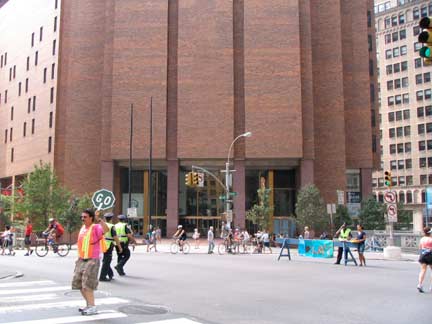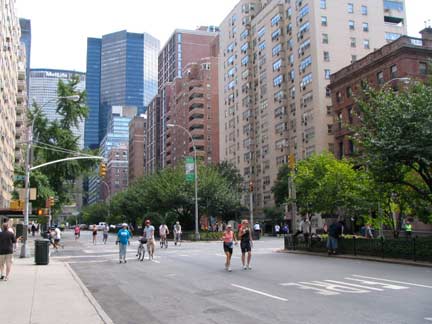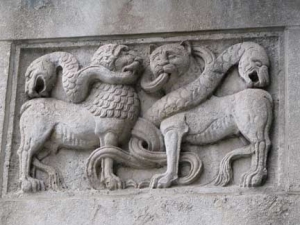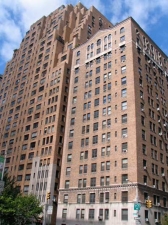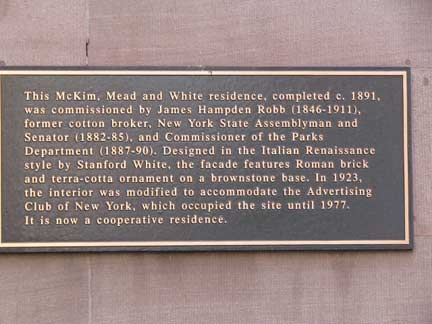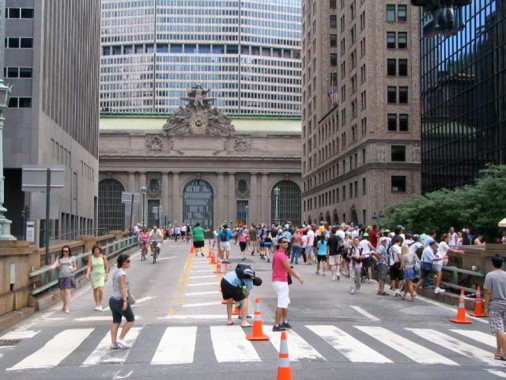On the first three Saturdays in August the Department of Transportation shuts down Lafayette Street, 4th Avenue, Park Avenue South, Park Avenue and part of West 72nd Street in theSummer Streets program, designed to give New Yorkers the run of these streets without threat of auto traffic. It’s been a smashing success after its 2009 institution, though the program is geared toward bicyclists and runners; plodding pedestrians like your webmaster are still largely relegated to the sidewalk, mostly by necessity. On August 7, 2010 I decided to walk the route and give the event a ForgottenNY spin.
The classic New York City fire alarm may not last much longer. The original classic design first appeared in 1913 and hundreds have miraculously remained in place, though no new ones have appeared since the 1940s, having beeen supplanted by boxier modern designs. However, it’s extremely rare to find one with an actual fire alarm indicator light attached — most fire alarm indicators are attached to nearby lampposts. This one is hiding in plain sight at one of NYC’s busiest intersections, the NW corner of Park Avenue and East 34th. It’s been decommissioned already — many fire alarms have been, in the 911 era — and New Yorkers now use it as a trash bin. It once helped save lives.
Many architectural critics don’t like #3 Park Avenue, which is catercorner to the street grid and replaced, in 1976, the earlier 71st Regiment Armory. It’s 42 stories high and 554 feet tall. The building is home to Norman Thomas High School and WLIB Radio and was constructed by the same architectural firm that designed the Empire State Building.
I was once almost hired at #3 Park for Transperfect Translations to do layouts, but the guy who wanted to hire me got fired himself, and that was the end of that. I did get a glimpse of the magnificent view from one of the upper floors where they’re located.
We’ve come a long way from gritty and occasionally grimy Lafayette Street, several miles to the south. Now we’re swanking with the swells on Park Avenue, in canyons of wealth.
16 Park Avenue at East 35th was constructed in 1924 and converted to condos in 1986, but I liked its rather odd friezes and the historical plaque describing the long-lost Manhattan hill and farm, Inclenberg, owned in the Revolutionary era by Robert Murray, for whom Murray Hill is named.
Murray Hill’s hill is most pronounced at Lexington Avenue and East 34th –it’s surprising to find a hill in lower Manhattan, where most hills were flattened and graded as the street grid was laid out in the early 1820s.
Possibly the handsomest building on Park between 34th and 42nd is the oldest, at the NE corner of East 35th. It was designed by Stanford White in 1898 as a private residence for NY State Senator James Hampden Robb in an Italian Renaissance style.
The Advertising Club of NY was housed here until 1977, so if Don Draper were “real”, he might well have been a guest.
One of the highlights of Summer Streets for your webmaster (and many other participants) is the ability to enter the Park Avenue Viaduct on foot and gawk at its many anachronisms and secrets, which I’ll get into on the next page in the series. On no other days is this possible as the Viaduct is truck, pedestrian and bicycle-free. The Viaduct runs on both sides of Grand Central Terminal and the Metropolitan Life (formerly Pan Am) Building from East 40th to East 46th. The Viaduct was completed in 2 stages, the left side in 1919 and the east side in 1928. Both sides meet again at East 46th Street and Park Avenue under the Helmsley Building.
In the photo above, a crowd is gathered for swimming in a cleaned up Dumpster®, one of an increasing number of these impromptu swimming pools around town.
Page completed August 25, 2010
PART 1 | PART 2 | PART 3 | PART 4 | PART 5 | PART 6 | PART 7

